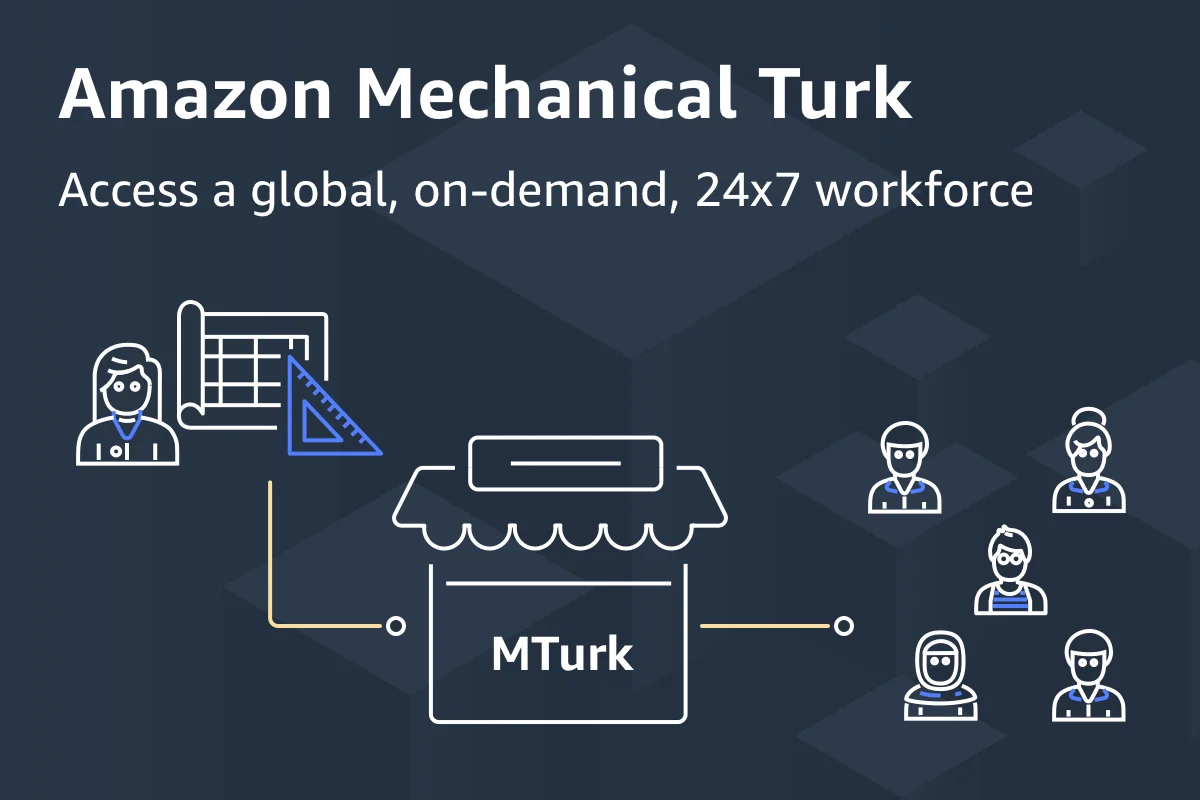Imagine you're the CTO of a promising tech startup, a key player poised to revolutionise the industry with your cutting-edge AI solutions. You've assembled a team of brilliant data scientists and engineers, acquired state-of-the-art hardware, and developed sophisticated algorithms. The potential of your AI model training is immense, and the journey to unlock it starts with accurate data labelling.
Yet, as you begin training your AI models, you hit a frustrating roadblock – your models are underperforming, producing inaccurate results that fall far short of your expectations. What's missing? The answer lies in a crucial, often underestimated component of AI development: high-quality, accurately labelled data. The gravity of this task cannot be overstated, as it is the foundation on which your AI model's success is built.

Welcome to the world of data labelling – the unsung hero of successful AI model training. This comprehensive guide will explore why data labelling is critical for developing high-performing AI models. We'll dive into real-world examples, uncover best practices, and reveal how leveraging LexiConn's expert data labelling services, backed by our [years of experience and proven track record], can drive your AI projects to new heights of accuracy and efficiency.
Let's start with a familiar example you've likely encountered countless times while browsing the web – Google's ReCAPTCHA. This clever system serves a dual purpose: it helps websites distinguish between human users and bots while generating vast amounts of labelled data for AI training.

When you're asked to identify traffic lights, crosswalks, or bicycles in a grid of images, you're not just proving you're human – you're actively participating in a massive data labelling project. Google uses these human-verified labels to train and improve its computer vision algorithms, enhancing services like Google Maps and autonomous vehicle technology.
What makes this approach to data labelling stand out?
Key Takeaway: Google's ReCAPTCHA demonstrates how creative approaches to data labelling can yield high-quality, diverse datasets at scale, significantly enhancing AI model performance.
Now, let's shift our focus to a platform revolutionising how companies approach data labelling – Amazon's Mechanical Turk (MTurk). This marketplace for human intelligence tasks has become a go-to resource for businesses and researchers looking to outsource data labelling tasks.
Imagine you're developing an AI model to detect emotions in facial expressions. You have thousands of images that must be labelled with the correct emotions. Enter MTurk. You can break down this massive task into smaller units, have them distributed to a global workforce, and receive accurately labelled data in a fraction of the time it would take to do it in-house.

What sets MTurk apart in the world of data labelling?
Key Takeaway: Amazon's Mechanical Turk exemplifies how outsourcing data labelling can provide businesses access to a diverse, scalable workforce, enabling faster and more cost-effective AI model training.
Let's delve into a more specialised domain—healthcare. IBM's Watson has made significant strides in medical imaging analysis, particularly in radiology and pathology. The success of these AI models hinges on highly accurate data labelling, which often requires the expertise of medical professionals.

Imagine the high stakes in training an AI to recognise initial symptoms of cancer in medical images. A slight error in data labelling could lead to missed diagnoses or false positives, potentially impacting patients' lives. This is where expert data labelling becomes crucial.
What makes IBM's approach to medical data labelling stand out?
Key Takeaway: IBM's approach to medical imaging data labelling underscores the importance of domain expertise in creating high-quality labelled datasets, particularly in specialised fields where accuracy is paramount.
Now that we've explored these illuminating examples, let's distil the key elements that make data labelling so crucial for AI model training:
a) Accuracy: The cornerstone of adequate data labelling. Only accurate labels can lead to AI models learning correct patterns, resulting in poor performance.
b) Consistency: Labels must be applied consistently across the dataset to ensure the AI model learns coherent patterns.
c) Scale: Large-scale datasets are often necessary to train robust AI models, requiring efficient labelling processes.
d) Diversity: A diverse range of labelled data helps AI models generalise better to real-world scenarios.
e) Domain Expertise: Expertise is often crucial for accurate labelling in specialised fields.
f) Adaptability: Labeling processes should be flexible enough to accommodate different data types and evolving project requirements
g) Quality Control: Mechanisms to verify and improve label quality are essential for maintaining high standards.
h) Cost-Effectiveness: Balancing the need for high-quality labels with budget constraints is a crucial consideration for many organisations.
i) Ethical Considerations: Ensuring fair representation and avoiding bias in labelled datasets is crucial for developing responsible AI.
j) Iterative Improvement: The ability to refine and update labels based on model performance and new insights is valuable for ongoing AI development
Read: How LexiConn Helped Amazon Increase Web Traffic with SEO BlogsL Let's explore how to implement an adequate data labelling process for your AI projects:
Clearly outline what needs to be labelled, the specific attributes or categories, and the level of detail required. This will guide your entire labelling process.
Decide whether to use in-house resources, crowdsourcing platforms, or specialised data labelling services based on your project's needs, budget, and timeline.
Create comprehensive labelling guidelines that ensure consistency across different labellers. For complex scenarios, include examples, edge cases, and decision trees.
Implement mechanisms like consensus labelling, expert review, or statistical quality checks to maintain high accuracy levels.
Begin with a small subset of your data to test your labelling process, identify potential issues, and refine your approach before scaling up.
Whether using in-house staff or external services, ensure all labellers are thoroughly trained on your guidelines and quality expectations.
Regularly review labelled data and provide feedback to labellers. Use insights from this process to refine your guidelines and improve overall quality.
Once confident in your process, scale up to label your entire dataset. Consider using data labelling platforms or services to manage larger volumes efficiently.
Continuously monitor the quality of labelled data and analyse its impact on your AI model's performance. Use these insights to guide further refinements.
Based on your analysis, iteratively improve your labelling process, guidelines, and quality control measures to enhance the overall quality of your labelled dataset.
As the demand for large-scale, high-quality labelled datasets grows, many organisations use specialised data labelling services. These services offer several key advantages:
- Expert : Professional data labelling services have experience across various domains and can provide valuable insights into best practices.
- Scalability : These services can quickly scale as per your project requirements, providing flexibility that is often challenging to achieve in-house.
- Advanced Tools : Many services use AI-assisted labelling tools and platforms that can significantly speed up the labelling process while maintaining high accuracy.
- Quality Assurance : Professional services often have robust quality control processes, ensuring consistent, high-quality labelled data.
- Cost-Effectiveness : Outsourcing is often more cost-efficient than managing an in-house labelling team, particularly for projects with varying demands.
- Focus on Core Competencies : By outsourcing data labelling, your team can focus on core AI development tasks rather than getting bogged down in labelling logistics.
When choosing a data labelling service, consider factors such as their experience in your specific domain, the range of labelling tasks they support, their quality assurance procedures, and their capability to manage your data securely and ethically.
As we look to the future, the field of data labelling itself is being transformed by AI. Emerging technologies are enabling more efficient and accurate labelling processes:
- Active Learning: This method employs machine learning algorithms to pinpoint the most valuable data points for labelling, minimising the amount of data that requires manual labelling.
- Transfer Learning: Leveraging pre-trained models can reduce the labelled data needed for new, related tasks.
- Auto-Labeling: Advanced AI models can automatically label large portions of a dataset while humans focus on reviewing and correcting these labels.
- Synthetic Data Generation: AI can generate synthetic labelled data, augmenting real-world datasets and potentially reducing the need for extensive manual labelling.
While these AI-assisted approaches show great promise, human oversight remains crucial. The role of human labellers is evolving from direct labelling to quality assurance, edge case handling, and continuous refinement of AI labelling systems.
As we've explored throughout this guide, data labelling is not just a preliminary step in AI development – it's a critical, ongoing process that can make or break the success of your machine-learning projects. From Google's innovative use of ReCAPTCHA to IBM's expert-driven approach in healthcare, we've seen how diverse and sophisticated data labelling strategies can drive AI innovation across industries.
As you embark on your AI development journey, remember the key elements we've discussed: accuracy, consistency, scale, and adaptability. Explore how data labelling services can enhance your capabilities and stay informed about emerging AI-driven technologies that could transform your processes. At Lexiconn, we are dedicated to assisting businesses in delivering high-quality data labelling that unleashes their full potential.
Our team specialises in AI data labelling services tailored to align with your vision and connect with your audience. Want to experience the difference? Reach out today to get your free pilot.
Are you ready to take your AI projects to the next level with strategic, adequate data labelling?



I have read and accept the Privacy Policy
Read More